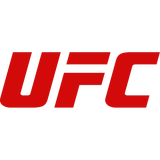
Team concepts for a solo sport
For Javier Mendez, the "UFC on FOX: Shogun vs. Vera" main event Saturday isn’t just between Mauricio “Shogun” Rua and Brandon Vera.
Mendez is looking at his competition: Rua’s gym, Universidade da luta, and Vera’s training facility, Alliance MMA.
“Definitely, we compare ourselves to other gyms — 100 percent,” Mendez, founder and owner of American Kickboxing Academy, told FOXSports.com at his Northern California gym. “Those who aren’t copping to it are lying.”
AKA has battled Greg Jackson’s Albuquerque gym — the consensus top gym in the world with the likes of UFC welterweight champ Georges St. Pierre and UFC light heavyweight champ Jon Jones in its stable — and Florida’s American Top Team for MMA training facility supremacy. New challengers have emerged from Brazil, including Black House, where UFC middleweight champ Anderson Silva trains.
And with the popularity of MMA soaring, Mendez and the owners of the other top gyms have seen increased competition in luring and keeping top talent.
“I like the fact there is competition,” said Mendez, whose gym boasts UFC heavyweight contender Cain Velasquez, among other elite pros. “I like the fact that everybody is getting stronger. I love all these new camps coming in. It’s great. It really is. If you only have three people interested, how big is your sport? If you are ranked No. 1 out of three gyms, how big of a deal is that?”
Keeping score, at least for Mendez, is fairly easy.
“We like to say, ‘We’re 4-0. We’re 6-0,' ” Mendez said. “All of a sudden, (shoot) we’re (expletive) 0-6. I don’t care how talented your camp is, you’re going to have your ups and downs. We had our downs. Greg Jackson had his downs, too. At the end of the day, they are a strong camp and they rise back above.”
Fighter migration is one of the most intriguing sideshows in the sport. The most talked about recent example of that is when Rashad Evans, who recruited Jones to Jackson’s camp, left last year to go to a Florida-based team now known as the Blackzilians.
“I know all about (Jones), all about his coaches and all about his camp," Evans said in a news conference before his April bout with Jones at UFC 145. "But I’m in a different environment, I knew I had to learn, had to mix things up, and I had to change.”
The fact that Evans and Jones, who won that grudge match, had a severe falling out also was a major factor. Such personality conflicts are common, although disputes that escalate to unsanctioned fisticuffs are rare.
Mendez, whose gym’s roots can be traced back two decades to a facility that Strikeforce CEO Scott Coker once ran, said he can only recall one argument between fighters that came to blows: a skirmish between Josh Thomson and Mike Kyle about eight years ago.
“Josh wanted to take his head off,” Mendez said. “He was upset because Mike wasn’t giving his best. Josh was pissed that Mike had all the gifts and wasn’t using them. They started swinging and go after each other blow for blow.”
Both fighters are still among the 30 or so pros who train at AKA.
“Babysitting is extremely important,” Mendez quipped.
Adds American Top Team co-owner and head instructor Ricardo Liborio: “Sometimes you feel like you’re watching a soap opera.”
There are a variety of reasons why fighters seek out a new facility beyond infighting, including a specialty, like jiujitsu, that is a staple at one gym. Liborio said, for the most part, those who lead the top gyms try not to take fighter departures personally.
“I think it’s important not to get emotionally involved, at least to a certain degree,” Liborio told FOXSports.com. “Nine years ago, it wasn’t even an issue. There was no money in the sport. But now you can pour a lot blood, sweat, tears and money into a guy and you manage his career. Then the fighter gets lured elsewhere after you made that investment. When something like that happens, it can feel like something underhanded took place.”
For the most part, Liborio said, it’s just part of the business.
“If somebody needs a change of scenery and, say, goes to train with Greg Jackson in New Mexico, it’s no big deal,” Liborio said. “Greg is a great guy and a great coach.”
One thing that can be grating to a team is stealing proprietary info.
“I imagine it could be annoying to some people, but it doesn’t bother me as long as (the fighter) doesn’t leave on bad terms,” said UFC bantamweight Urijah Faber, who founded his own gym, Team Alpha Male, in Sacramento, Calif., eight years ago. “It’s when somebody goes over and helps another camp beat your guys. That would piss me off. But, for the most part, this is an individual sport.”
While it’s great if everybody gets along, the “team” concept in MMA is mostly about how deep and talented your roster of fighters is. More fighters mean more sparring partners to help prepare you for the next fight.
“(Choosing AKA) was mostly about the fact they had a strong team already,” said Strikeforce welterweight Nate Moore. “You just look about how things are run. I got a good feel for how things are run and knew the coaches were legit. There were people there that were great at striking and boxing. “
The camaraderie is there, but it’s not what Moore had with his wrestling teammates at Purdue. That’s the same for the rivalries. American Top Team vs. AKA isn’t quite Ohio State vs. Michigan — even if the MMA camps do keep tabs on each other.
“There’s an unwritten code,” Liborio said. “You never talk bad about another camp. Fighters will talk sometimes and stories come out, but that’s the nature of the business. There is a lot of respect amongst the bigger camps.”
